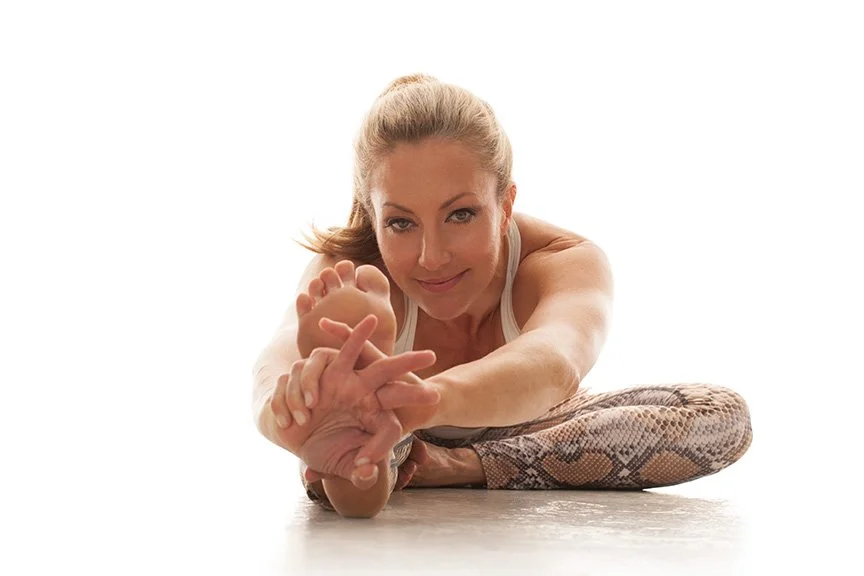Hot yoga vs. Bikram yoga: What’s the difference?
I wrote this several years ago for a now-defunct health & wellness website called HellaWella. I hope it gives you clarity if you are interested in trying hot yoga or Bikram yoga.
Want to add some heat to your yoga practice this winter but not sure where to start? With the help of hot yoga expert Loren Bassett, I break down the basics to help you on your sweaty way.
Bikram is a specific form of yoga created by Bikram Choudhury from Hatha Yoga. It is a 90-minute practice consisting of a series of 26 postures done twice through in a hot, 105-degree room or “torture chamber” with a humidity level of 40%. It is done in the same order every time and with the same dialogue — it never changes.
Hot yoga is simply yoga practiced in a heated room between 95 and 100 degrees and at a humidity level between 50% to 80%. Instructors have the freedom of mixing up their classes as they please. Add a little heat to fitness-based power yoga, and you’re ready to melt away some pounds.
“The heat adds a whole new dimension to the practice. Hot power yoga is a challenging, vigorous, full-body workout that builds mental and physical strength, improves flexibility and balance, and detoxes the body and mind at its deepest levels,” says Bassett, who is a power yoga instructor and founder of Bassett’s Boot Camp, Pure Yoga and David Barton. “The heat adds a cardiovascular aspect to the practice because it increases the heart rate, burning more calories and ultimately increasing your metabolism. The sheer intensity of the heat can take you deeper physically, mentally, emotionally and spiritually. Just staying in the room can be a challenge!”
Internal/external connection
“It was the physical challenge that drew me in initially,” Bassett says. “As my practice evolved, the transformation began — an internal shift. The philosophical and spiritual aspect of this practice is so powerful. It changed my life and the way I see the world. It empowers you and inspires you to make the world a better place.”
The discipline of holding a posture in a sustained intensity while sweating profusely promotes a deeper level of mental strength and concentration. It teaches you to find comfort in discomfort, exceed the limitations of the mind and overcome mental obstacles. You feel a tremendous sense of accomplishment and confidence because it challenges you to push through the mental and physical resistance, transcend and embrace a feeling of strength and serenity. As the body gets stronger and more flexible, the mind goes along for the ride.
Loren Bassett via LorenBassett.com
What to bring
Bassett suggests bringing a sufficient amount of water and a skidless mat like yogi toes that you can put over your yoga mat to prevent slipping. It’s ideal to wear yoga clothes made of material that breathes and dries quickly.
“Lululemon designed an awesome line specifically for sweaty workouts made of Swiftly and Silverescent material to keep you dry and stink-free. You can wear shorts, but I recommend wearing pants (crop or long) that cover the knees to prevent slipping in postures like crow pose,” Bassett said. “Bring a change of clothes, because you will be drenched after class!”
Benefits of practicing yoga in the heat
Physical detoxification from heavy sweating by flushing toxins from the body
Mental detoxification — letting go of negative thoughts and limited beliefs
Allows for more depth in the postures, creating more elasticity in the muscles Increases heart rate, which speeds up the breakdown of glucose and fatty acids, thereby burning more calories
Promotes mental concentration and strength due to the intensity of the heat
Requires discipline, which promotes a deeper level of concentration and commitment in order to overcome obstacles mentally and physically
Common health risks
Exercising in the heat is not recommended for everyone. Consult your doctor before starting hot yoga if you are pregnant, have low blood pressure or have a heart condition. It’s important to stop if you feel dizzy, lightheaded or sick. Other health risks include dehydration, so be sure to be well-hydrated and avoid caffeine and alcohol, which can cause dehydration. There also hazards to look out for that include slipping — sweat and sliding — and stretching too far, going beyond biological limits and causing injury.
My book, “Gettin’ Fit, Learnin’ Sh*t (About Myself and Life): A Beginners Guide to an Active Lifestyle, For Life!” is now available on Amazon here or free with any coaching program. Check it out!


